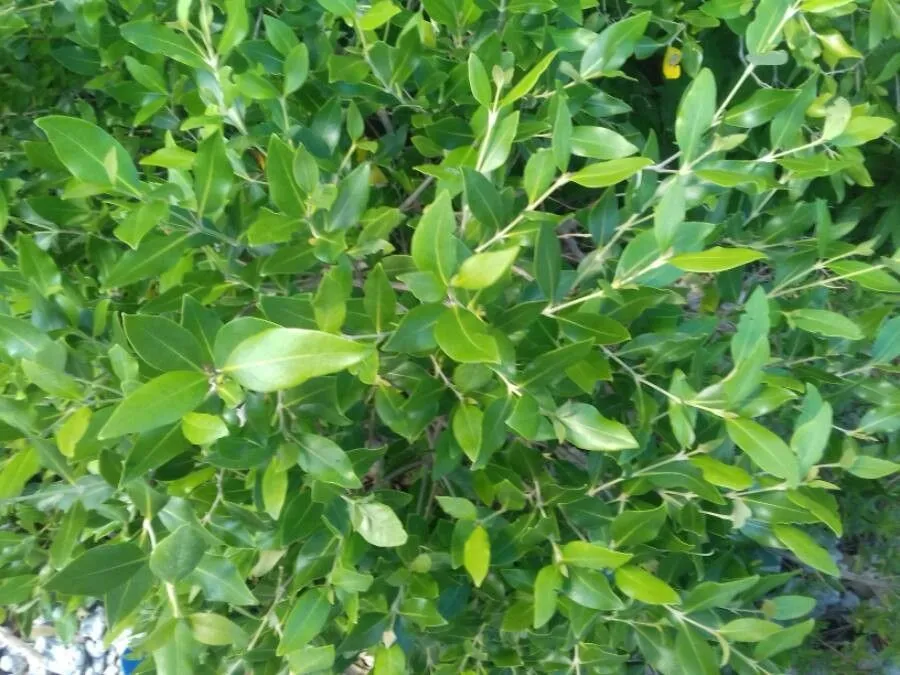
Author: (Forssk.) Vierh.
Bibliography: Denkschr. Kaiserl. Akad. Wiss., Wien. Math.-Naturwiss. Kl. 71: 435 (1907)
Year: 1907
Status: accepted
Rank: species
Genus: Avicennia
Vegetable: False
Observations: Trop. & Subtrop. Old World
The Grey Mangrove, known scientifically as Avicennia marina, is a prominent species found predominantly in tropical and subtropical areas of the Old World. Initially described in the early 20th century, this mangrove has been extensively documented in various scientific texts, including the comprehensive study published in the Denkschriften of the Imperial Academy of Sciences, Vienna, in 1907.
Belonging to the Acanthaceae family, the Grey Mangrove is distinguished by its remarkable adaptability and resilience in harsh coastal environments. These mangroves can be identified by their distinctive greyish bark and leaves with a silvery underside, which helps to reflect sunlight and minimize water loss, a crucial adaptation for survival in saline and intertidal zones.
Avicennia marina plays a vital ecological role in its natural habitat. It contributes significantly to coastal stability by reducing erosion and providing protection against storm surges. The complex root systems of these mangroves create a unique underwater environment, offering a haven for various marine species, which helps to maintain biodiversity and support fisheries.
Moreover, the Grey Mangrove exhibits fascinating physiological adaptations. It is known for its pneumatophores, specialized aerial roots that facilitate gas exchange by sticking out of the waterlogged soil, and salt-excreting leaves that manage the high salinity levels of its habitat.
Despite their resilience, Grey Mangroves face threats from climate change, coastal development, and pollution, making conservation efforts critical. Protecting these vital ecosystems ensures not only the survival of Avicennia marina but also the myriad of species and communities that depend on them.
Studied and admired for over a century, the Grey Mangrove remains a subject of considerable interest due to its ecological significance, complex adaptations, and the protective benefits it offers to coastal environments.
Msa: api-api jambu, api-api merah
Eng: gray mangrove, grey mangrove, white mangrove
Zho: bai gu rang
Tam: venkandan
Jpn: ヒルギダマシ
En: Grey mangrove, White mangrove, Gray mangrove, Grey Avicennia, Blackwood, Parwa
Ar: شوره (شُوره), شورى
Zh: Bai gu rang
Ja: ヒルギダマシ
Ms: Api-api Jambu, Api-api merah
Es: Mangle nero, Mangle prieto, Manglecito
Ta: Venkandan
Taken Jan 14, 2020 by Daniel Grixti-Cheng (cc-by-sa)
Taken Oct 8, 2022 by maelani indaswari (cc-by-sa)
Taken Jul 12, 2018 by Kamaria Hassane (cc-by-sa)
Taken Apr 27, 2022 by Jannie Shelton (cc-by-sa)
Taken Oct 28, 2020 by vivien shih (cc-by-sa)
Taken Jan 14, 2020 by Daniel Grixti-Cheng (cc-by-sa)
Taken Jan 21, 2019 by Blue Bottle (cc-by-sa)
Taken Jan 21, 2019 by Blue Bottle (cc-by-sa)
Taken Apr 6, 2020 by Blue Bottle (cc-by-sa)
Taken Oct 8, 2022 by maelani indaswari (cc-by-sa)
Taken Feb 25, 2014 by EOL − John Barkla (cc-by-nc)
Taken Apr 27, 2015 by EOL − Lek Khauv (cc-by-nc)
Taken Apr 27, 2015 by EOL − Lek Khauv (cc-by-nc)
Taken Jul 12, 2018 by Kamaria Hassane (cc-by-sa)
Taken Jan 14, 2020 by Daniel Grixti-Cheng (cc-by-sa)
© copyright of the Board of Trustees of the Royal Botanic Gardens, Kew.
© copyright of the Board of Trustees of the Royal Botanic Gardens, Kew.
© copyright of the Board of Trustees of the Royal Botanic Gardens, Kew.
Taken Jun 17, 2021 by Ishraf Ahmed Mohammed (cc-by-sa)
Taken Jun 17, 2021 by Ishraf Ahmed Mohammed (cc-by-sa)
Taken Dec 5, 2020 by baptiste legrand (cc-by-sa)
Taken Jan 14, 2020 by Daniel Grixti-Cheng (cc-by-sa)
Taken Oct 8, 2022 by maelani indaswari (cc-by-sa)
Taken Aug 15, 2011 by Daniel Barthelemy (cc-by-sa)
Taken Apr 12, 2019 by Blue Bottle (cc-by-sa)
Taken Oct 11, 2012 by John Tasirin (cc-by-sa)
Taken Nov 15, 2014 by EOL − Ken-ichi Ueda (cc-by-nc)
Taken Dec 20, 2021 by daauud xuseen (cc-by-sa)
Taken Mar 25, 2021 by susan brown (cc-by-sa)
Taken Mar 25, 2021 by susan brown (cc-by-sa)
Taken Oct 15, 2022 by ontalba ricardo (cc-by-sa)
Family: Myrtaceae Author: (F.Muell.) K.D.Hill & L.A.S.Johnson Bibliography: Telopea 6: 402 (1995) Year: 1995 Status:…
Family: Rubiaceae Author: Pierre ex A.Froehner Bibliography: Notizbl. Bot. Gart. Berlin-Dahlem 1: 237 (1897) Year:…
Family: Sapindaceae Author: Koidz. Bibliography: J. Coll. Sci. Imp. Univ. Tokyo 32(1): 38 (1911) Year:…
Family: Asteraceae Author: A.Gray Bibliography: Pacif. Railr. Rep.: 107 (1857) Year: 1857 Status: accepted Rank:…
Family: Fabaceae Author: Medik. Bibliography: Vorles. Churpfälz. Phys.-Ökon. Ges. 2: 398 (1787) Year: 1787 Status:…
Family: Aspleniaceae Author: (Cav.) Alston Bibliography: Bull. Misc. Inform. Kew 1932: 309 (1932) Year: 1932…